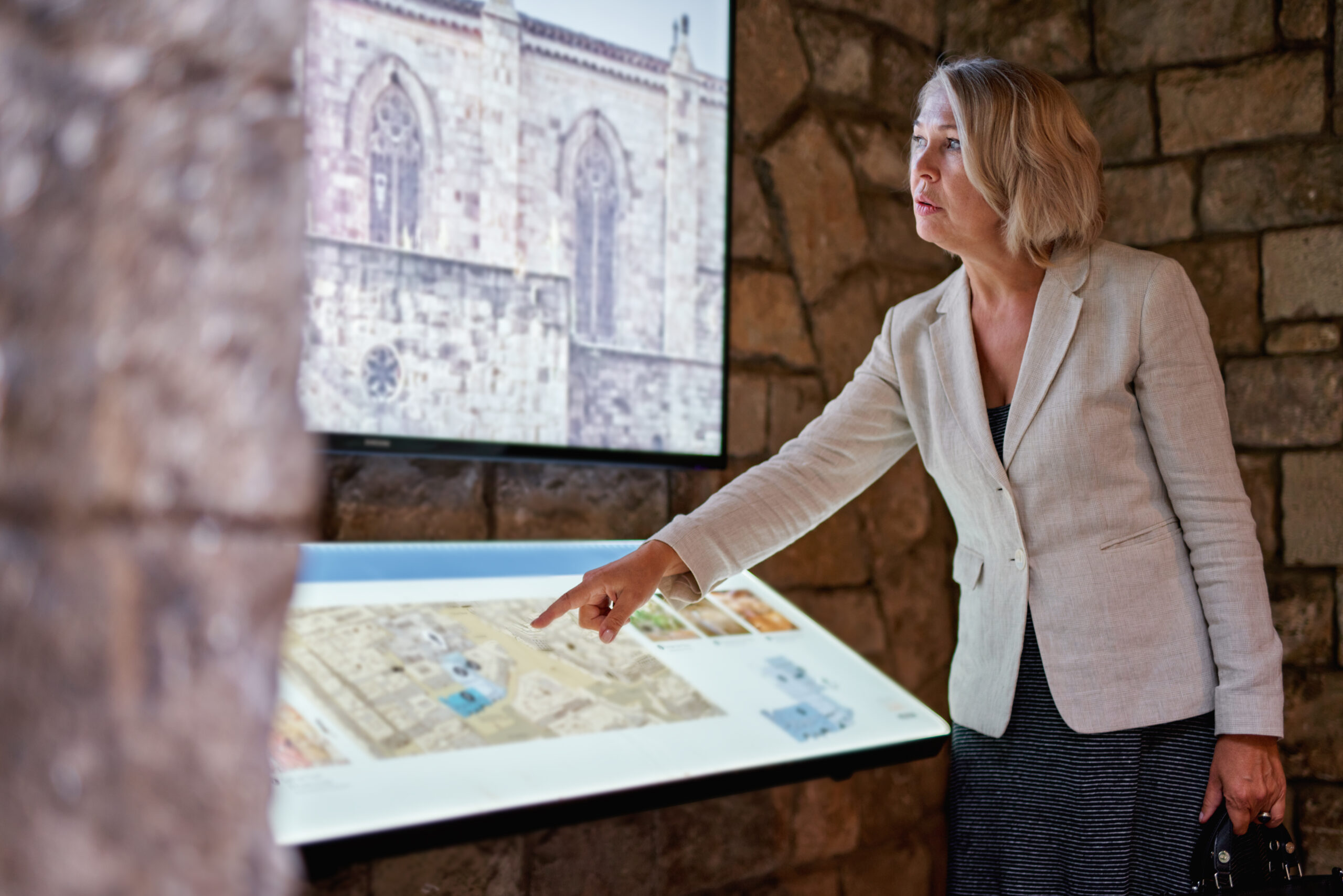In today’s fast-evolving digital landscape, museums are increasingly embracing technology to protect their collections, enhance visitor experiences, and streamline operations. Integrating technological solutions transforms museum operations, making them more secure, saving money, and making them accessible to a broader audience. Here’s how some leading museums are leveraging these technologies:
- Advanced Surveillance Systems:
Modern surveillance systems in museums have gone beyond simple video monitoring. High-definition cameras offer real-time insights into visitor interactions with collection pieces. In some systems, the ability to draw protection zones around specific pieces adds an extra layer of customized protection, notifying staff with the option of an audible alert when someone gets too close to a valuable artifact. These systems help identify potentially harmful activities, ensuring that exhibits are safe.
- Environmental Monitoring Sensors
Museums house delicate and priceless artifacts that are highly sensitive to environmental changes. Temperature, humidity, and light levels must be precisely controlled to preserve these items. These sensors provide real-time data and alerts if conditions deviate from the required range, ensuring that artifacts remain in the best possible condition and preventing long-term damage.
- Interactive Touchscreens and Augmented Reality (AR)
Many museums are incorporating interactive touchscreens and AR technology to enhance the visitor experience. These devices can allow visitors to see how artifacts looked in their original form or within their historical context. Interactive touchscreens also provide visitors with detailed information about exhibits in an engaging and immersive manner, enriching the overall museum experience.
- Smart Lighting Systems
Lighting plays a critical role in the presentation and preservation of exhibits. Smart lighting systems can adjust the intensity and focus of light based on the time of day and the presence of visitors. This provides an exceptional environment for viewing and preservation of art. These systems can also reduce light exposure when no visitors are present, helping to preserve sensitive artifacts. Additionally, smart lighting enhances the aesthetic appeal of exhibits, ensuring they are displayed in the best possible light.
- Vape and Air Quality Sensors
As museums are public spaces, the quality of the air is essential for both visitors and artifacts. The implementation of vape sensors and air quality monitoring systems to detect harmful substances such as smoke and pollutants has become common practice in many museums and cultural properties. These sensors protect the integrity of the collections and ensure a safe and healthy environment for visitors and staff. With the increasing use of vape products, these sensors have become particularly important in maintaining clean air within museum spaces.
- Digital Inventory and Asset Management Systems
Managing a vast collection of artifacts is a complex task, and digital inventory systems have become indispensable for modern museums. Using a comprehensive digital inventory system that allows for the detailed cataloging of each item, including its condition, location, and history. Integrated tracking technologies are used to monitor the movement and status of artifacts, ensuring that nothing is lost or misplaced.
- Visitor Analytics and Flow Management
Understanding visitor behavior is key to optimizing museum layouts and improving the visitor experience. Utilizing advanced analytics tools to track visitor movements, dwell times at exhibits, and overall flow through the museum helps in designing more efficient and engaging exhibits, managing crowd control, and tailoring the museum experience to different visitor demographics.
- Emergency Response Systems
In the event of an emergency, whether it’s a fire, medical incident, or security breach, museums need to respond quickly and effectively. Integrating emergency response systems that are connected to surveillance cameras and environmental sensors provides a comprehensive response to any potential threat. These systems are designed to alert the appropriate personnel and guide visitors to safety, ensuring the protection of both people and collections.
- Digital Open Source Catalogs
In addition to physical exhibits, many museums are now offering their art digitally via open-source catalogs. Many museums now provide open access to high-resolution images of their collections online, allowing art enthusiasts and researchers worldwide to explore and study their vast collections. These digital catalogs democratize access to art, making it available to a global audience regardless of location, and supporting educational and research initiatives.
Conclusion
Integrating technology is reshaping the landscape of modern museums while enhancing security and visitor experience. As technology evolves, museums are poised to become even more interactive, engaging, and secure spaces. Embracing these technological advancements will help museums continue to preserve cultural heritage while making them accessible to all.


